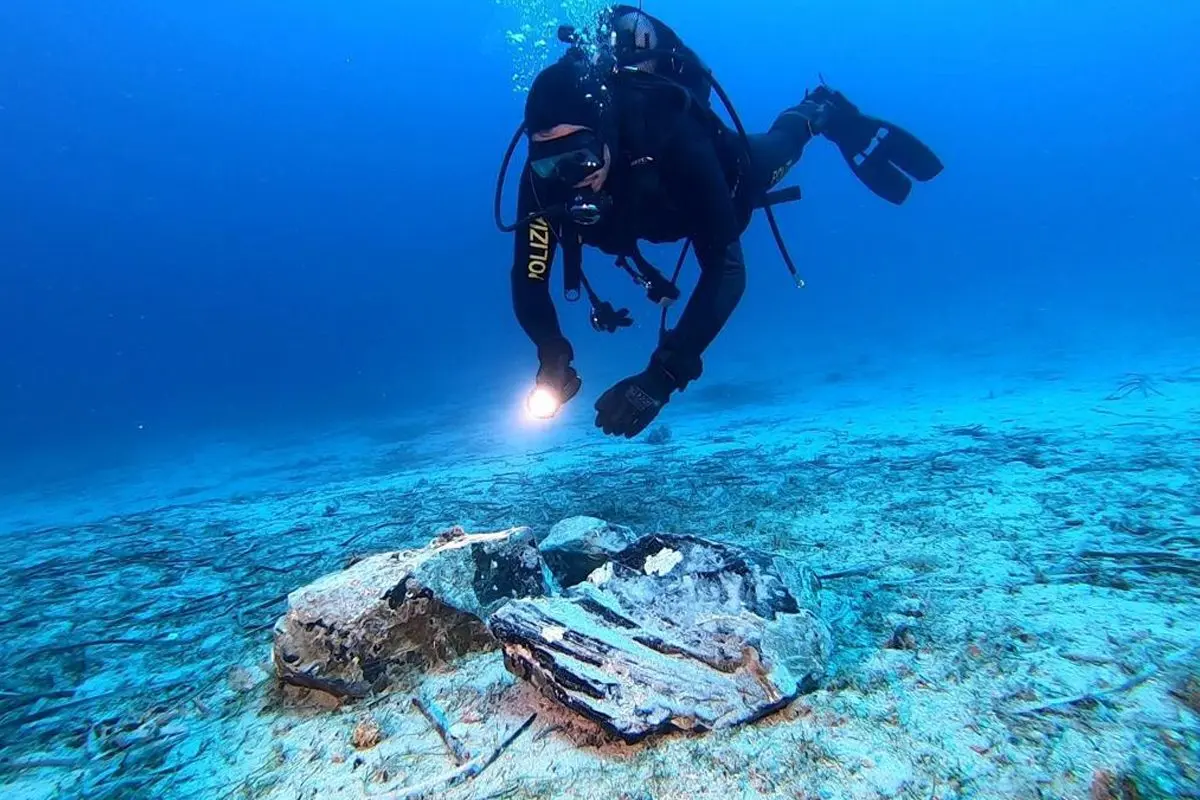Underwater archaeologists from the Superintendency of the Metropolitan Area of Naples have recovered obsidian cores from the remains of a Neolithic shipwreck off the coast of Capri.
The wreck was first discovered by a diving team from the Naples Police Headquarters’ underwater unit near Capri’s famous Blue Grotto (Grotta Azzurra), a site known to have been used as a private bathroom by Roman emperors.
A recent recovery mission to the wreck site discovered a dispersion of obsidian core material at a depth of around 40 metres. One of the recovered cores shows clear traces of chiselling and carving on its surface, which has been transported to the Superintendency for the removal of marine concretions and preservation.
The core measures approximately 28 x 20 centimetres by 15 centimetres tall, and weighs almost 8 kilograms.
The Superintendent said: “It was necessary to carry out an extensive study of the seabed to verify the possible presence of the hull or other cargo material and direct the excavation in a difficult context for the investigation and recovery of ancient materials.”
Very little is known about Neolithic Capri, however, archaeological evidence does indicate human presence on the island during the Neolithic and the Bronze Age.
The National Superintendency of Underwater Cultural Heritage has already scheduled subsequent recovery operations, which will be carried out in collaboration with the Superintendency of the Metropolitan Area of Naples.
According to the researchers, the recovery mission will allow for a more in-depth investigation of the frequentation of the island during prehistory, but also of the ancient Mediterranean in general.
Header Image Credit : Superintendency of the Metropolitan Area of Naples





